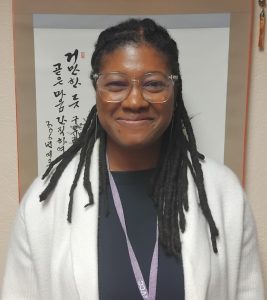Learning about the world inside Autism
April 7, 2016
According to the Centers for Disease Control and Prevention, 1 in 68 children has been identified with autism spectrum disorder. It’s five times more common in boys than girls, giving males a ratio of 1 out of 42 with autism.
Autism is a developmental disability, referred to by Harvard University as neurological and contains a spectrum which spans high-functioning individuals and low-skill individuals.
As of October the severity of autism is determined by rating skills into one of three levels: mild, moderate, and severe. A diagnosis is often in front of a panel of various specialists who observe the child and help diagnose exactly where they stand on the spectrum.
An individual on the high-functioning side of the spectrum may have difficulty with their social lives. They may talk about one subject only and have difficulty tearing themselves away from it. Stimming is common in high-functioning and low-skill individuals. Common behaviors include repetitive actions such as waving hands, rolling cars in front of their eyes, rocking, shutting and opening doors, particularly when anxious.
A low-skill individual especially with children may have no language. Instead of talking, they scream or grab a family member’s hand to show them what they want. Some low-skill individuals with autism can be self-injurious, banging their heads on walls and smacking themselves in frustration.
“Parents often notice the same sort of things,” said the director of Illinois Valley Autism Center, Cindy Bennett.
There is no known cure or cause for autism. However, according to the CDC early intervention into behavioral treatment has been proven affective. Applied behavior analysis (ABA), breaks down skills in smaller pieces in order to teach children basic skills and then build on them.
According to Illinois Valley Autism Center, ABA takes the principals of behavior and uses it to bring about positive change. The ABA defines behaviors in observable and measurable terms in order to access change and define behavioral progress. ABA analyzes the behavior to determine what factors are influencing behavior.
The ABA breaks down skills into tiny pieces based on the needs of the individual it’s applied to. Therapists may start by teaching the child a single word, then build on that word to teach the child language and skills. Data is kept that focuses on where the child is and where they should be in terms of language, play, imitation, and socialization.
“This lets us know where the child falls, so we know what to teach.” Bennett said. “If you can get the child into therapy early enough, it’s possible to be integrated into a classroom by age 6 without an aide.” The CDC states that it is best to try and get a child into a therapy program by age 3, as it greatly improves the child’s development. Illinois mandates that ABA therapy be covered by insurance; however many places opt out of covering it in their policies.
My younger brother has autism. He’s nine years old and when he was a toddler he was nonverbal. He screamed when he was unhappy, he didn’t look me in the eye when I talked to him. He’d look right through me. He didn’t see me. He would lie on the floor and roll Hot Wheels cars in front of his eyes for long periods of time, not interested in other toys or fun things.
My mother took him to Moline for ABA therapy every day. The long drives to therapy were taking up too much time and my mother decided to start her own center and not only for my brother, but for the kids in the area who had nowhere local to go for help.
Years later, my brother is very fond of bossing me around. He asks me for things and he wants me to take him to Subway and buy him stuffed animals. He has a sense of humor, jokingly offering me a container of chicken broth if we’re looking in the pantry for something to eat.
He loves Disney movies and Snoopy from the Peanuts comics. He loves to camp indoors and fly kites. I’ve watched him begin to pay more attention to things, to really interact, and his language continues to improve.
Despite there being no cure for autism or an explanation of why it happens and why the numbers keep increasing, there is help.
For the people that suffer from extreme anxiety, changes in schedule or frustrated from not being able to get their point across, there is help. For the people who seem oblivious to the world they live in, there is no cure. But there is help.



